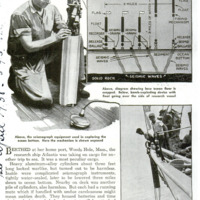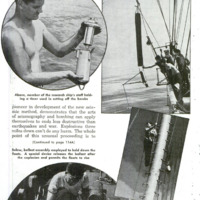Mapping the Ocean Floor with Bombs
Contenuto
- Titolo
- Mapping the Ocean Floor with Bombs
- Article Title and/or Image Caption
- Mapping the Ocean Floor with Bombs
- Lingua
- eng
- Copertura temporale
- World War II
- Data di rilascio
- 1941-05
- pagine
- 728-729, 114A
- Diritti
- Public Domain (Google digitized)
- Sorgente
- Google books
- Archived by
- Enrico Saonara
- Alberto Bordignon (Supervisor)
- Copertura territoriale
- United States of America




